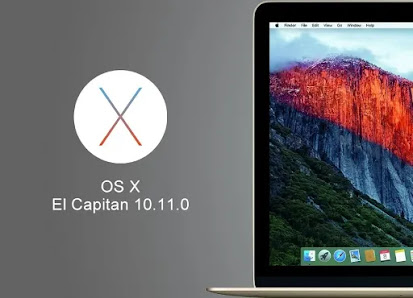How to install El Capitan?
A new Split View, Safari, Mail, Notes, Maps, and Photos features in the new OS X El Capitan, and more. You have to install the operating system on your Mac to get your hands on all this new stuff.
It's easy if you want to try out a standard OS update. It's installed from the App Store. Here, we'll go through the steps of installing Yosemite's EL Capitan.
It’s about preparation
There's a little bit of prep work you can do before you install the update. Before you continue, our article on how to get your Mac ready for OS X 10.11 El Capitan is what you should read. It includes:
Compatible hardware and older versions of OS X
Verifying the health of your Mac
Installing updates
Backups
Encryption issues
Go read the article and when you're ready to go, come back here.
How to download El Capitan
The El Capitan upgrade is given by Apple via its App Store. The download is a little over 6 GB, so you might want to download it at a time when you have other things to do, depending on your internet connection and the amount of traffic in the App Store, how long it takes to download. Or you can use your Mac while you wait, but when the download is finished, be ready to save your work and leave.
Launch the App Store app in your Applications folder (or go to Apple menu > App Store) to download El Capitan. You'll probably immediately find El Capitan, particularly if you go to the App Store shortly after the official release. Apple will probably have a banner advertising El Capitan at the top, but if you don't see it, in the far right column, you will probably find it in the Free section (you might have to scroll down to see it). And on El Capitan, you can always do a search.
Click on the Download button when you get to the El Capitan page in the App Store. You may need to enter your Apple ID and password, and the installer will be downloaded after you have done so.
Copy the installer
The installer will start automatically when the download is completed. In the installer, don't press Proceed yet. What you do not know is that once the installation is completed, the installer is downloaded to your Applications folder and then deleted.You can get the installer from the App Store if you ever need it again. Yet I enjoy making a copy of the installer. In order to make a bootable flash drive that I can use, I always have to perform OS installations; it's much quicker than waiting for the download.
You need to hold down the Option key to copy the installer as you drag the Install OS X El Capitan app to the copy destination in your Applications folder. You'll make an alias, not a duplicate, if you don't keep Option down.
Install El Capitan
OK, now in the installer window you can click the Continue button. (Go to your Applications folder if the installer is not running and double-click the Install OS X El Capitan app.) You will be asked to agree and then check that you have committed to the license agreement.
The next screen will ask you to pick the disk to install El Capitan. You can see it in the installer window if you have one storage device with one partition. But if you have multiple storage devices and/or multiple partitions, by clicking on the Display All Disks button, you can select the one you want. Make a list and click the Install button.
You must enter your username and password to continue. You will be able to install the installation, restart your Mac and execute the installation. During the installation process, the Mac could restart again. It will take a few minutes to load, so you might want to go for a walk, call your wife, take a nap, or catch up on tasks while the software is doing its thing.
The Mac will restart when the installation is finished and you will need to log in with your username and password. If you want to send diagnostic information to Apple, you will be asked if you need to log in with your Apple ID, and then the setup screen appears and goes away. You're done.
Want to do a clean install of El Capitan?
When you install the operating system on a blank storage unit, it is a clean installation. By making a bootable El Capitan installer and then using it as your Mac's boot drive, you can do this. To uninstall your drive, you run the Disk Utility and then proceed with the El Capitan installation.
You use Migration Assistant once the installation is done to transfer your data from a Time Machine backup.
Why should you install a clean system? You may have partitioned the storage device, and you want to modify the scheme. Or maybe over time you've installed and removed lots of apps and want to get right of any lingering components of software-if this is the case, don't restore your data from a backup of Time Machine. Copy your files manually and reinstall your software.



Comments
Post a Comment